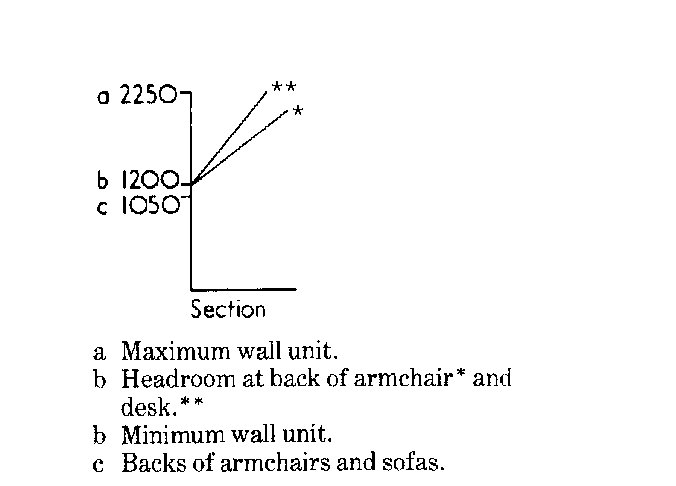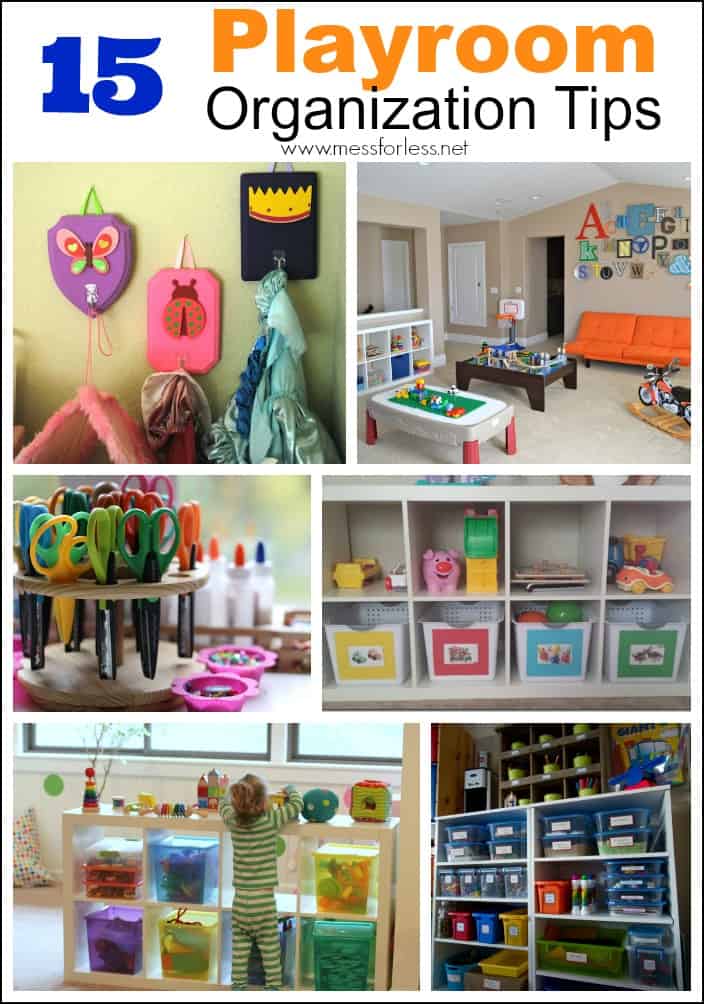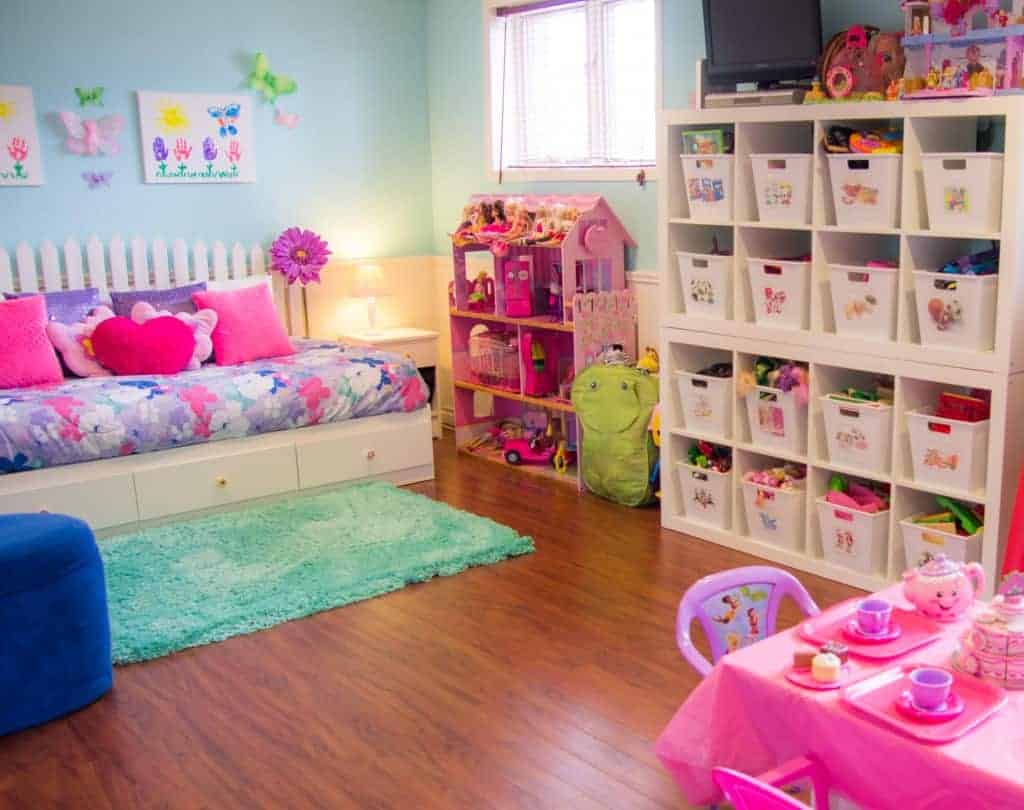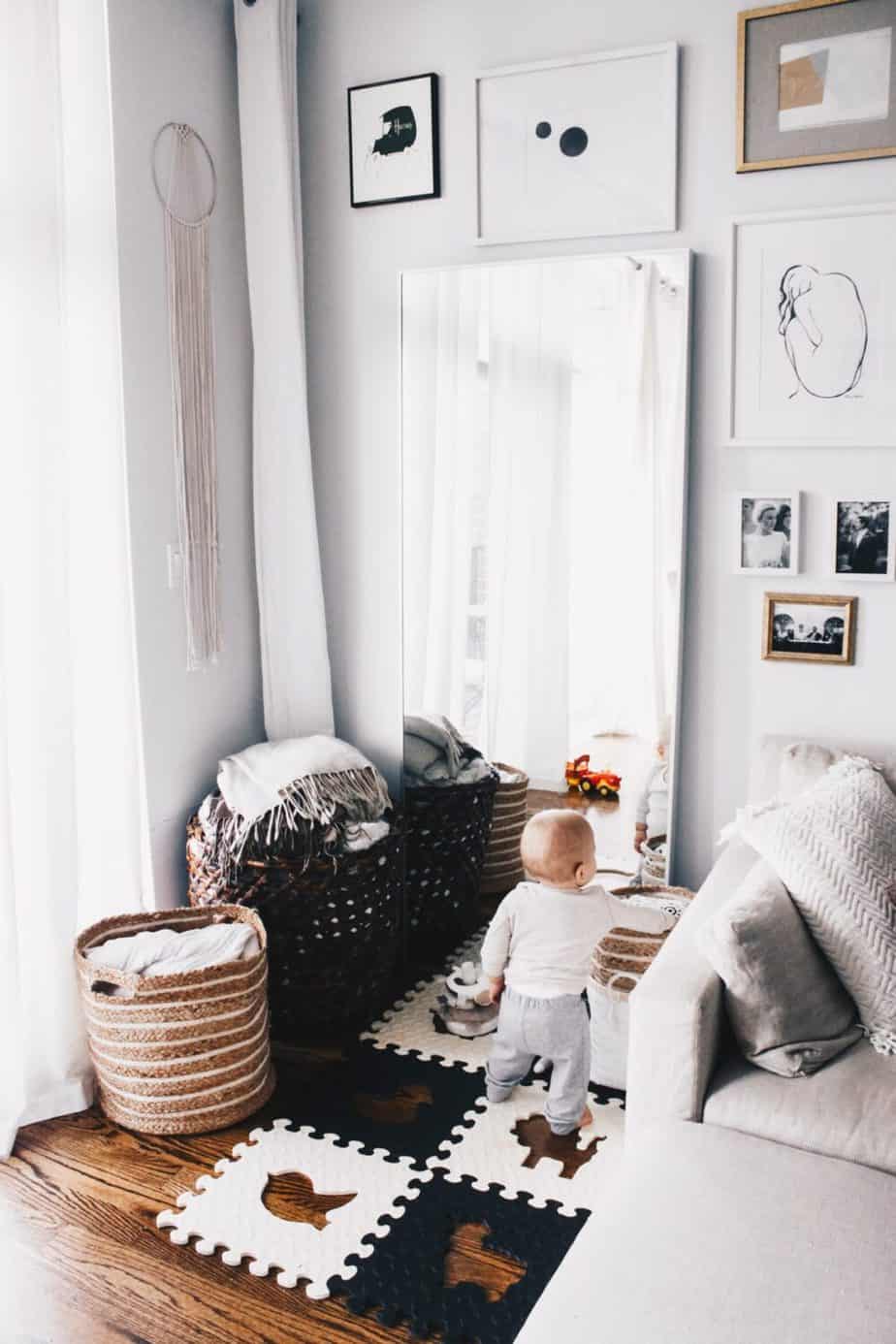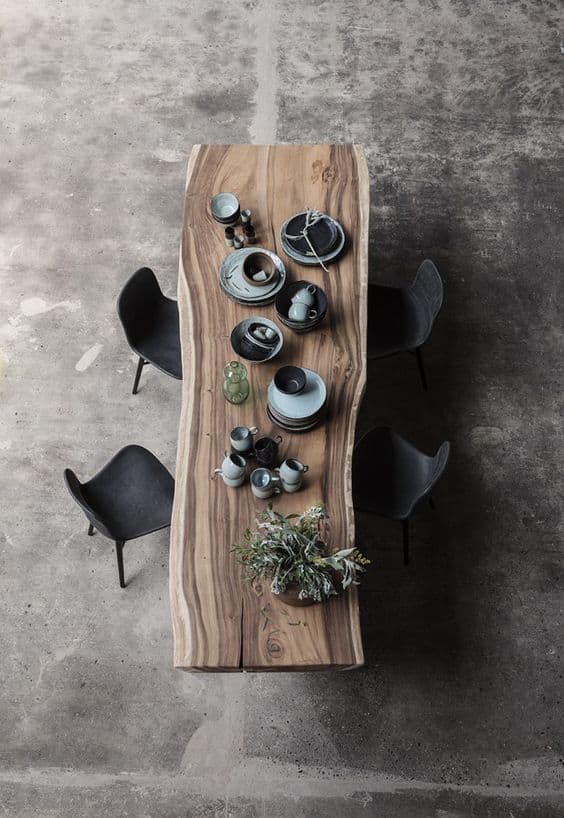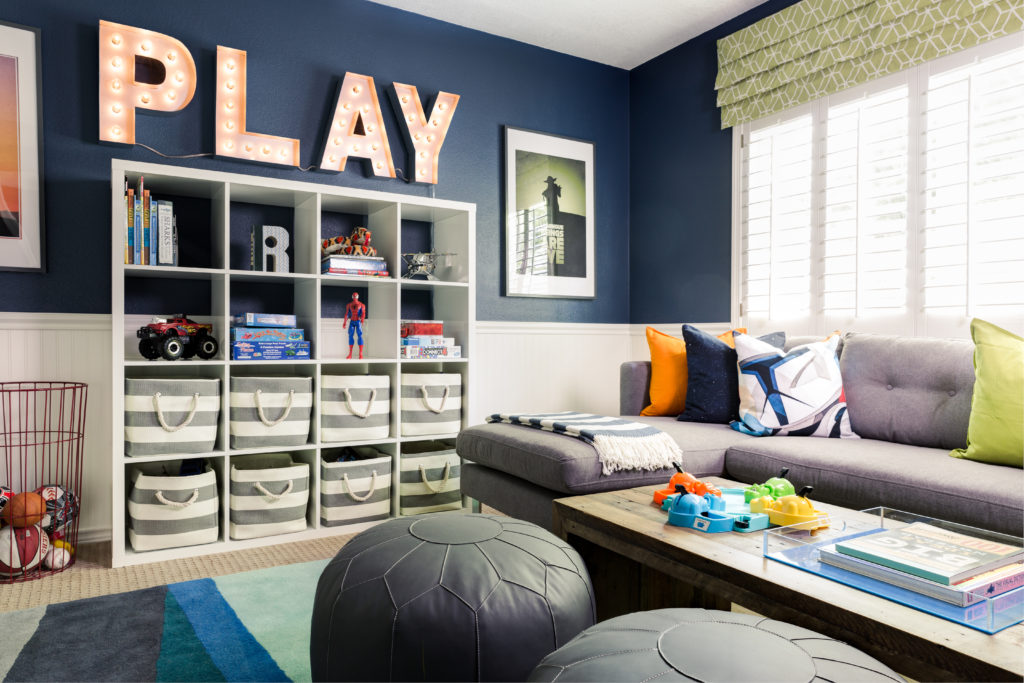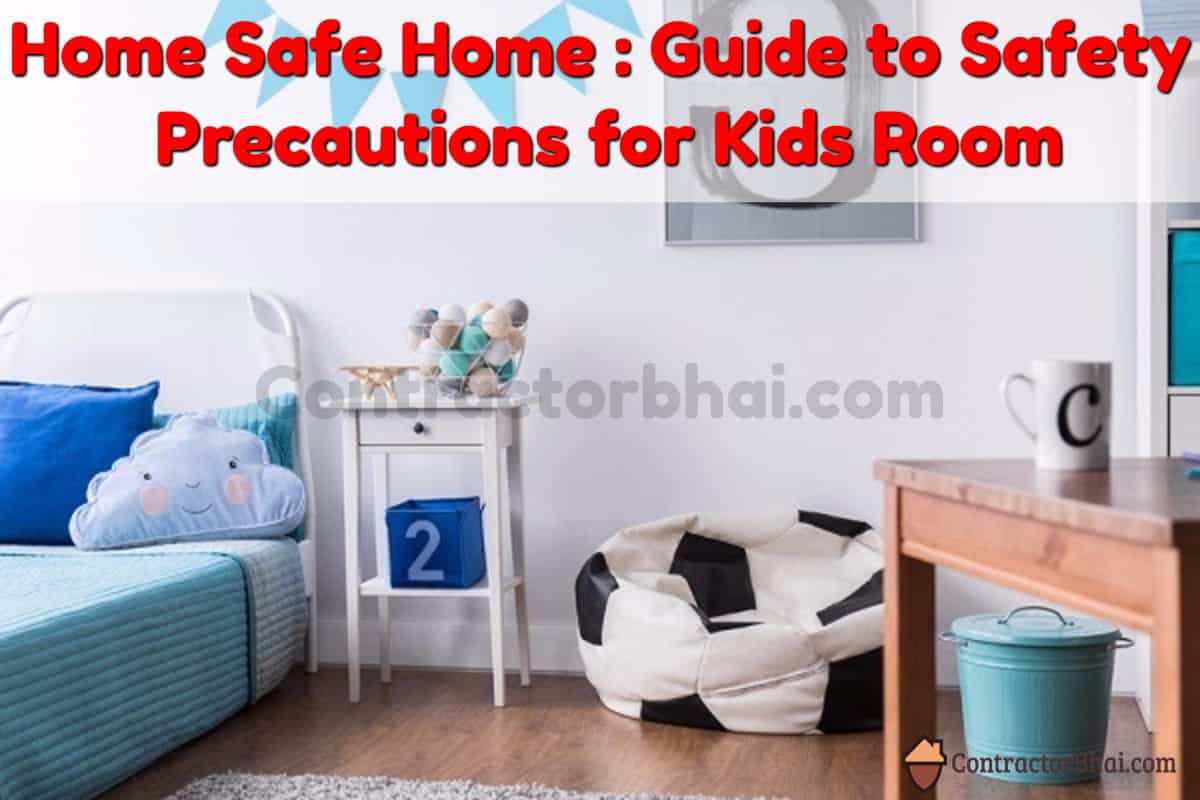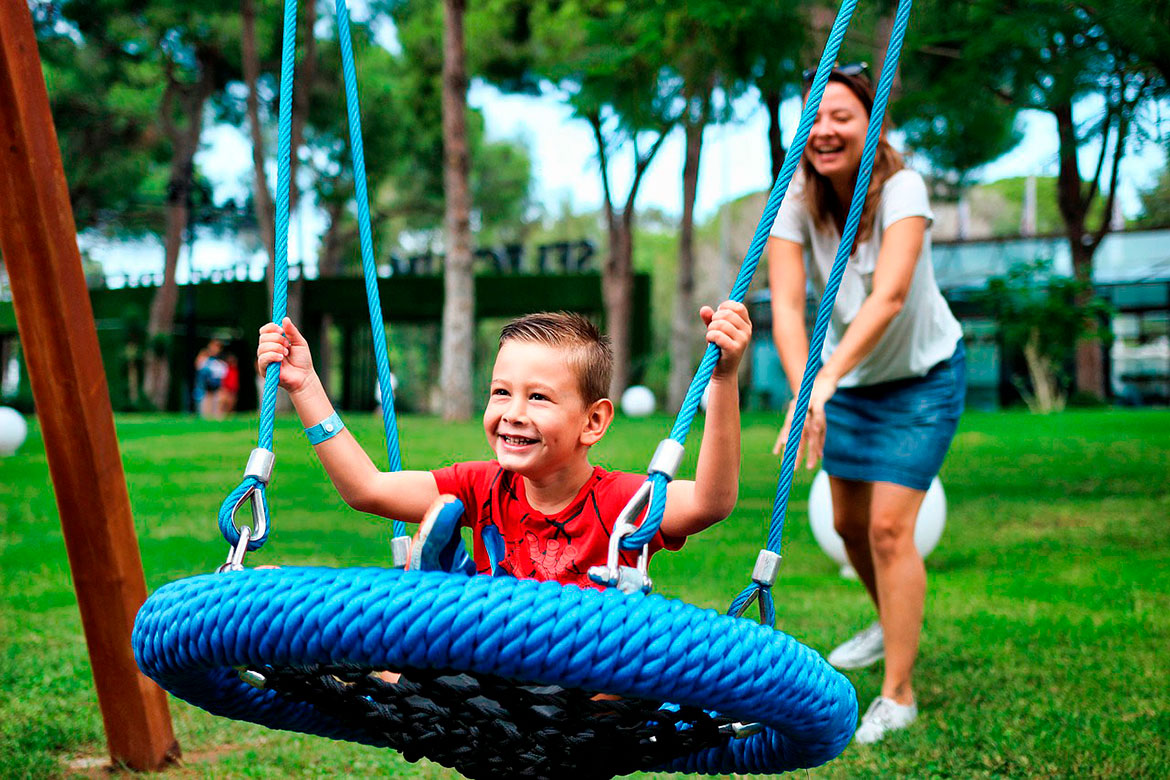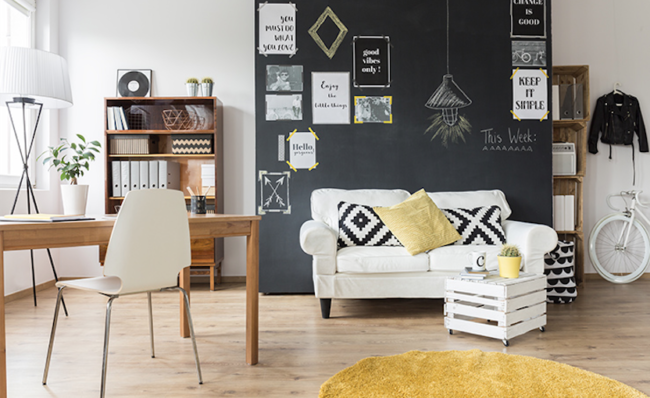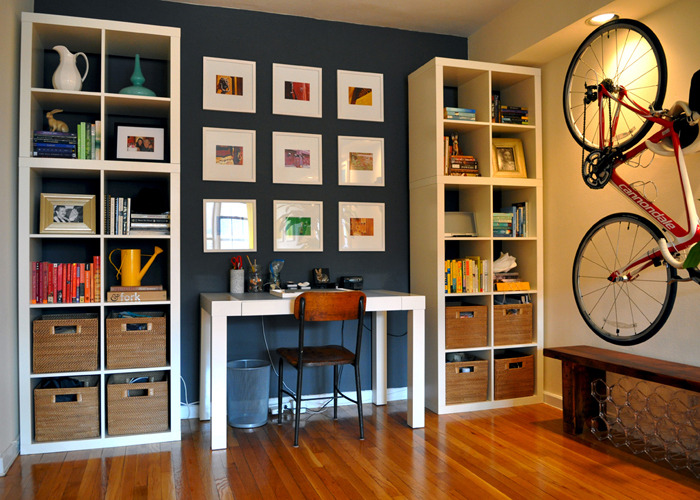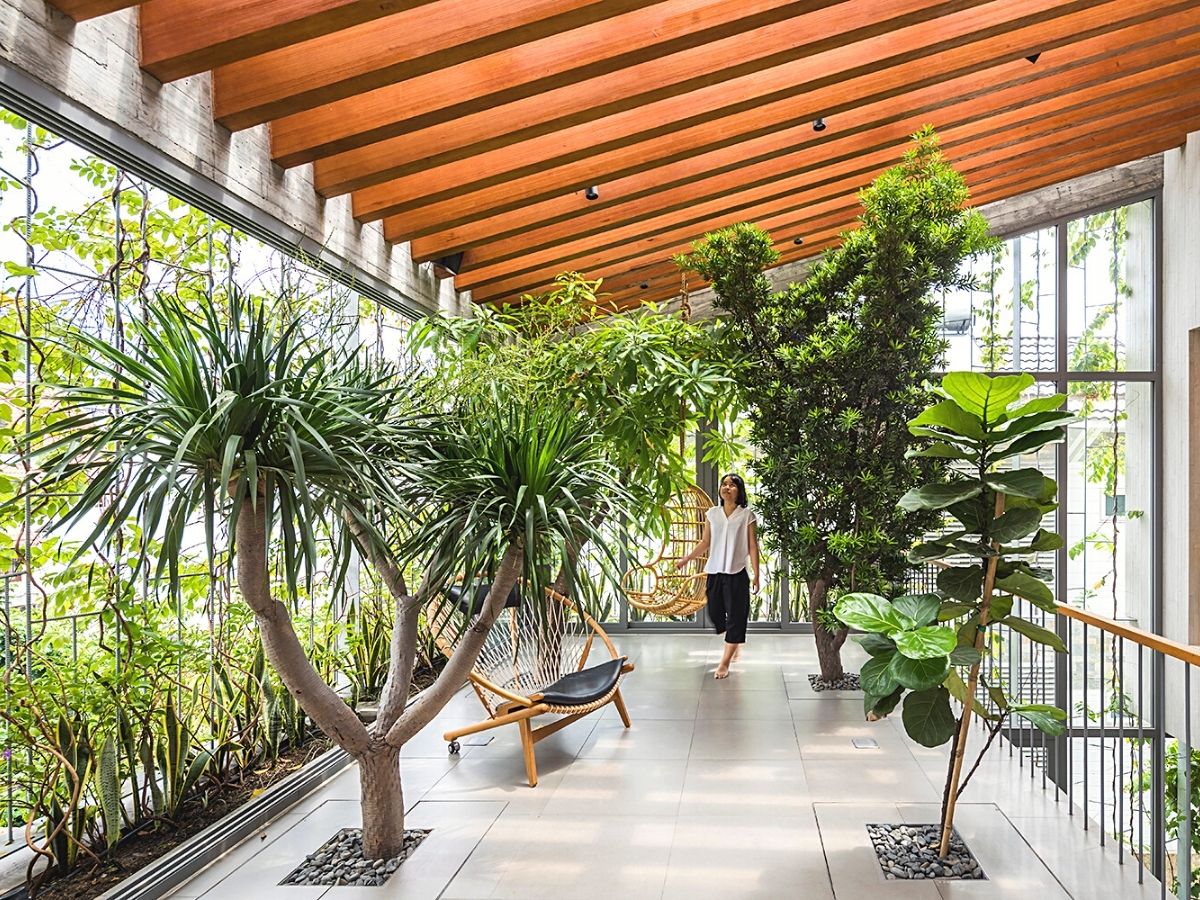Having a designated play area in your living room is a great way to keep your kids entertained while still being able to supervise them. This area can also serve as a space for family bonding and activities. When considering your living room layout, it's important to keep in mind the size and functionality of the play area. A designated play area should be easily accessible, safe, and clutter-free, while also blending seamlessly with the rest of your living room decor.1. Creating a designated play area in your living room
Organization is key when it comes to a successful play area in your living room. It's important to have designated spaces for different types of toys and activities. Utilizing storage solutions such as bins, shelves, and toy boxes can help keep the play area tidy and functional. Consider labeling each storage space to make it easy for your kids to clean up and put away their toys.2. Tips for organizing a play area in your living room
If you have limited space in your living room, it's important to be creative when it comes to setting up a play area. One option is to utilize a corner of the room and create a cozy reading nook or play tent. Another option is to utilize furniture that can serve a dual purpose, such as a storage ottoman that can also be used as seating for the play area.3. Maximizing space for a play area in your living room
The direction of your play area can have a big impact on the flow and functionality of your living room. Consider placing the play area in a corner or against a wall to free up space in the center of the room. This will also help keep the play area contained and prevent it from spilling into other areas of the living room.4. Choosing the best direction for a play area in your living room
As mentioned before, storage is key for keeping a play area organized. But it's also important to choose storage solutions that blend seamlessly with your living room decor. Consider using baskets, bins, or shelves that match the rest of your furniture to create a cohesive look.5. Incorporating storage solutions into your living room play area
When designing your living room play area, it's important to strike a balance between aesthetics and functionality. While you want the play area to look inviting and fun, it's also important to consider the practicality of the space. Choose furniture and decor that can withstand the wear and tear of playtime, and opt for easy-to-clean materials for any seating or rugs in the play area.6. Balancing aesthetics and functionality in a living room play area
The safety of your children should be a top priority when setting up a play area in your living room. Make sure to choose furniture and decor that is child-friendly and free from any sharp edges or small parts that could be choking hazards. It's also important to regularly check and replace any toys or equipment that may have become damaged or worn over time.7. Safety considerations for a play area in your living room
A play area in your living room doesn't have to be just for toys and games. Consider incorporating a small table and chairs for arts and crafts or a mini-kitchen set for imaginative play. This will not only provide your children with different activities to engage in, but it also allows the play area to serve as a multi-functional space for various activities.8. Creating a multi-functional play area in your living room
Don't forget to utilize the walls and vertical space in your living room play area. This can be done by installing shelves or hanging baskets for additional storage. You can also create a fun and interactive wall by using chalkboard or magnetic paint, allowing your children to express their creativity and keep them entertained for hours.9. Utilizing vertical space for a play area in your living room
Bringing elements of nature into your living room play area can help create a calming and inviting atmosphere. Consider adding plants, a small indoor sandbox, or a rock climbing wall for a touch of the outdoors. Not only will this add a unique and fun element to the play area, but it also encourages children to learn and explore the natural world.10. Incorporating natural elements into a living room play area
Benefits of Having a Play Area in Your Living Room

Encourages Family Bonding
 Having a play area in your living room not only provides a space for your children to play, but it also encourages family bonding. Instead of isolating themselves in their rooms, your children can play and interact with you and other family members while you are in the living room. This creates a sense of togetherness and strengthens the family bond.
Having a play area in your living room not only provides a space for your children to play, but it also encourages family bonding. Instead of isolating themselves in their rooms, your children can play and interact with you and other family members while you are in the living room. This creates a sense of togetherness and strengthens the family bond.
Promotes Creativity and Imagination
 A designated play area in the living room can also be a space for your children to unleash their creativity and imagination. By providing them with toys and materials, such as building blocks, art supplies, and dress-up clothes, you are giving them the opportunity to explore and express themselves. This can also help in their cognitive and social development.
A designated play area in the living room can also be a space for your children to unleash their creativity and imagination. By providing them with toys and materials, such as building blocks, art supplies, and dress-up clothes, you are giving them the opportunity to explore and express themselves. This can also help in their cognitive and social development.
Easy Supervision
 Having a play area in the living room also allows for easy supervision of your children. As a parent, you can keep an eye on your children while doing other tasks in the living room. This provides a sense of security knowing that your children are safe and within your reach.
Having a play area in the living room also allows for easy supervision of your children. As a parent, you can keep an eye on your children while doing other tasks in the living room. This provides a sense of security knowing that your children are safe and within your reach.
Utilizes Unused Space
 Most living rooms have a designated seating area and open space that often goes unused. By incorporating a play area in this unused space, you are maximizing the functionality of your living room and making the most out of your home's square footage.
Most living rooms have a designated seating area and open space that often goes unused. By incorporating a play area in this unused space, you are maximizing the functionality of your living room and making the most out of your home's square footage.
Convenient and Organized
 Having a play area in the living room also promotes convenience and organization. Instead of toys and playthings being scattered all over the house, they can be contained in one designated area. This makes clean-up easier and reduces clutter in other areas of your home.
In conclusion, having a play area in your living room has numerous benefits for both children and parents. It promotes family bonding, creativity, and easy supervision while utilizing unused space and promoting organization. Consider incorporating a play area in your living room for a functional and enjoyable space for the whole family.
Having a play area in the living room also promotes convenience and organization. Instead of toys and playthings being scattered all over the house, they can be contained in one designated area. This makes clean-up easier and reduces clutter in other areas of your home.
In conclusion, having a play area in your living room has numerous benefits for both children and parents. It promotes family bonding, creativity, and easy supervision while utilizing unused space and promoting organization. Consider incorporating a play area in your living room for a functional and enjoyable space for the whole family.









